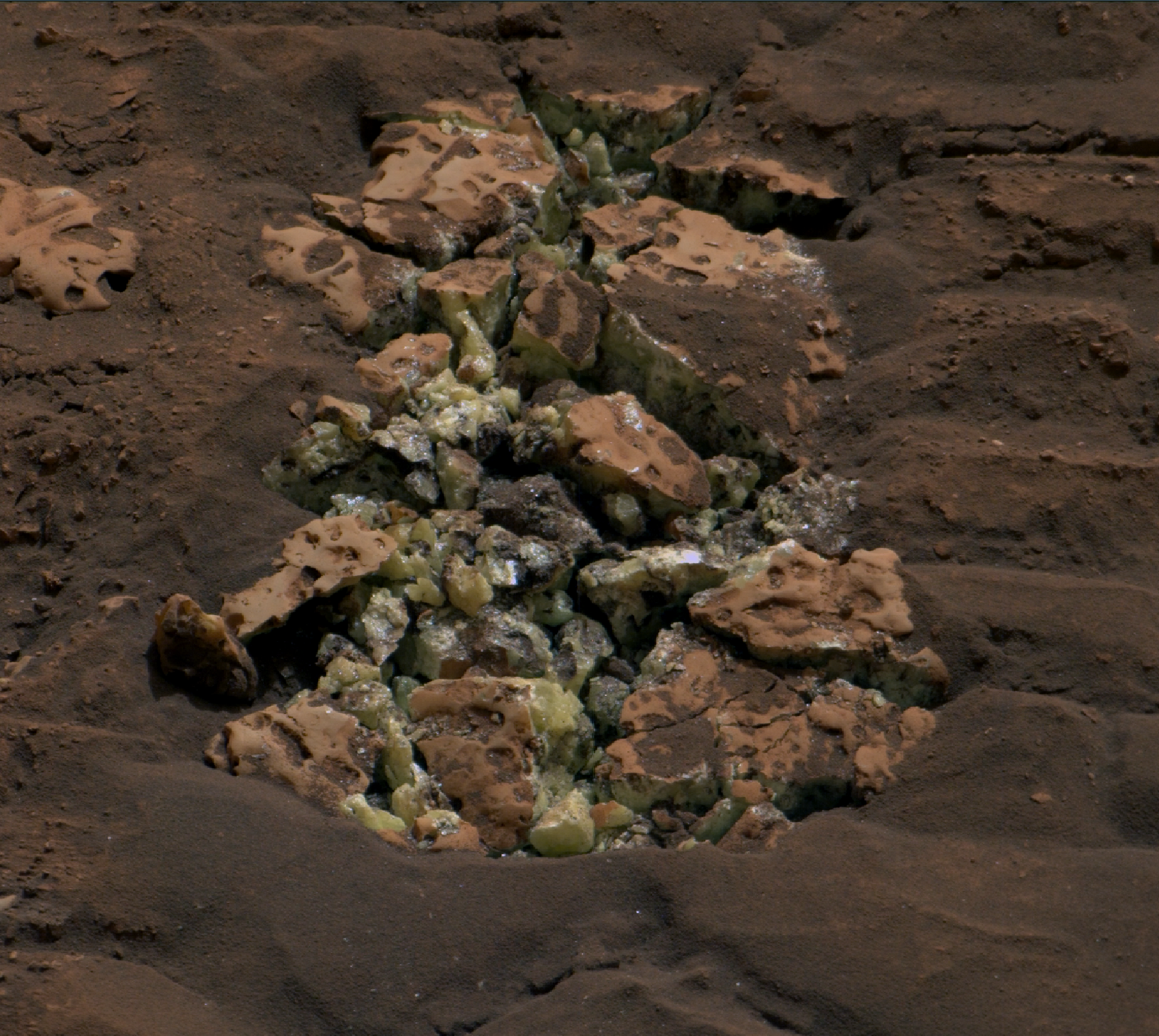Dazzling yellow crystals have been found on the surface of Mars by NASA's Curiosity rover, NASA announced Thursday. according to A rock crushed by the probe's wheels hides sulfur crystals that researchers have never seen on this planet before.

photo_camera
Yellow sulfur crystals in rock shattered by Curiosity
Image: NASA/JPL-Caltech
Curiosity, which has been cruising through Gale Crater since landing in 2012, is currently investigating an area rich in sulfate minerals — sulfur-containing salts that form as water evaporates. However, the rock the rover passed in late May is made of pure sulfur, which can only be formed under exceptional circumstances.
Until now, researchers thought that such stones were not typical of the sulfate region's history, but it turned out that the fragmented stone is not alone: In the rover's images, countless similar, bright stones appear in the valley of Mount Sharp, which rises in the crater, called Geddes Vallis, which once had liquid water and may have spewed debris from it.
“Finding a rocky field of pure sulfur is like finding an oasis in the desert,” said Ashwin Vasavada, the rover’s mission scientist and a planetary scientist at NASA’s Jet Propulsion Laboratory (JPL). The rocks shouldn’t be there, so an explanation must be found for their presence, he said. “What makes planetary exploration so exciting is finding the strange and unexpected,” he said.
The rocks, made of sulfur crystals, are too small and fragile to be sampled by the rover’s drill, but in mid-June researchers found a suitable nearby rock called Mammoth Lakes. Its composition is already being analyzed by Curiosity’s onboard labs.
Since Curiosity arrived at Geddes Valles earlier this year, researchers have been trying to figure out whether ancient floods or landslides created the debris piles rising in the valley. The latest findings, based on observations of the shape of the rocks, suggest that both processes likely played a role: Some of the mounds were left behind by violent flooding, others by local landslides.

photo_camera
The Geddes Valles River Valley in this March image taken by Curiosity.
Image: NASA/JPL-Caltech
“This is not a quiet period in Mars’ history,” said Becky Williams, a researcher at the Planetary Studies Institute in Tucson, who said the valley shows signs of multiple flows, including violent, rock-laden floods. All of this suggests that the history of Martian water is more complex than researchers previously assumed.
The nuclear-powered Mars rover began climbing Mount Sharp 10 years ago, whose layers tell the story of different periods in Mars’ geological history. Using Curiosity, researchers have found evidence of ancient lakes that provided the chemicals and energy sources necessary for life. They’ve also found organic molecules and conditions favorable to the creation of complex biomolecules.






